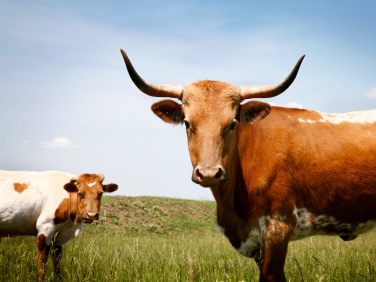
feed-image, l
(article, Laura Troyer)
Back in August, just before the barbecueing blitz of Labor Day weekend, a public-health alert issued by the U.S. Department of Agriculture’s Food Safety and Inspection Service warned consumers to avoid Northwest Finest brand beef because of possible E. coli contamination. Part of the meat in question was organic. Organic beef is generally considered safe when it comes to mad-cow disease, a disease that can develop when cows consume rendered cattle parts; such feed is banned under the USDA organic standards. But organic beef isn't necessarily any safer when it comes to E. coli. This can be particularly frustrating for consumers who have plunked down the extra cash organic beef usually commands. The E. coli strain suspected in the August outbreak was the particularly virulent O157:H7 strain. “It’s not found in the intestinal tracts of cattle raised on their natural diet of grass, hay and other fibrous forage,” wrote Nina Planck, author of Real Food, in a 2006 op-ed for the New York Times. “No, O157 thrives in a new — that is, recent in the history of animal diets — biological niche: the unnaturally acidic stomachs of beef and dairy cattle fed on grain, the typical ration on most industrial farms.” Finishing (a period of fast growth to create intramuscular marbling) cattle on grass — and only grass — is the answer to the E. coli problem, say advocates like Planck. Although "corn-fed" sounds particularly wholesome and old-fashioned to many American consumers, it's only since World War II that the modern practice of finishing cattle in confinement on grain (and anything else more or less digestible) has flourished. [%image feed-image float=right width=350 credit="Photo: iStockphoto/codyphotography" caption="Was your cow finished or merely begun on grass?"] According to the USDA, a certified-organic animal must be given “access to the outdoors, shade, shelter, exercise areas, fresh air, and direct sunlight suitable to the species, its stage of production, the climate, and the environment.” But as Michael Pollan, author of The Omnivore's Dilemma, wrote a few years ago in the New York Times_ Sunday magazine, the organic label alone "doesn't fundamentally challenge the corn-feedlot system, and I'm not sure that an ‘organic feedlot’ isn't, ecologically speaking, an oxymoron.” A grass-fed product can be certified organic just like its grain-fed counterpart. But the organic label doesn't say it all; many uncertified ranchers still avoid the use of hormones and antibiotics, for example. Grass-fed beef also has health benefits for both animal and consumer: The absence of grain in the cow's diet reduces the risk of potentially fatal bloat and acidosis. And studies have shown that grass-fed beef is leaner, richer in omega-3 fatty acids, and higher in the antioxidant vitamins A and E than grain-fed beef. Nearly all U.S. beef cattle are fed grass early in life before being finished on grain, so in stores, look first for beef labeled "grass-finished," not "grass-fed." If pure grass-finished beef isn't available, try to find producers who supplement pasture with grain for only a short time (a study out of Oklahoma State University suggests a time-on-feed of less than 112 days). Bear in mind, too, that the grass-fed beef in larger markets is often imported from countries like Australia, New Zealand, and Uruguay, where finishing on grass is the norm. Eat Wild, a website promoting grass-fed meat, offers a list of pre-screened U.S. and Canadian retailers, markets, and farms that sell grass-fed beef. Additional farms and markets can be found through Local Harvest. Finally, Lois Higgins of GrassRoots Meats in Pagosa Springs, Colorado, points out that “wellness is not just about meat . . . it’s a package deal.” Most GrassRoots customers, she explains, have diets heavy in fruits and vegetables, either homegrown or organic. In other words, man cannot live well on grass-fed meat alone. Also on Culinate: An interview with Glenn and Caryl Elzinga of Alderspring Ranch and Matthew Amster-Burton's research into aged beef.

feed-image, l